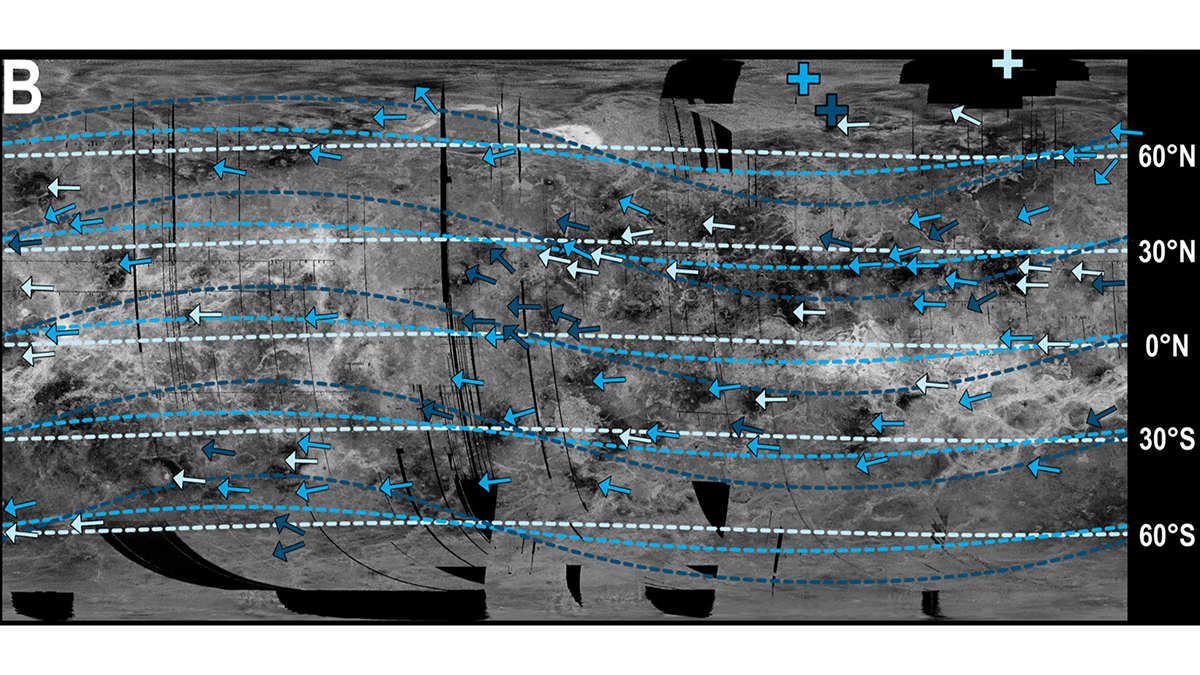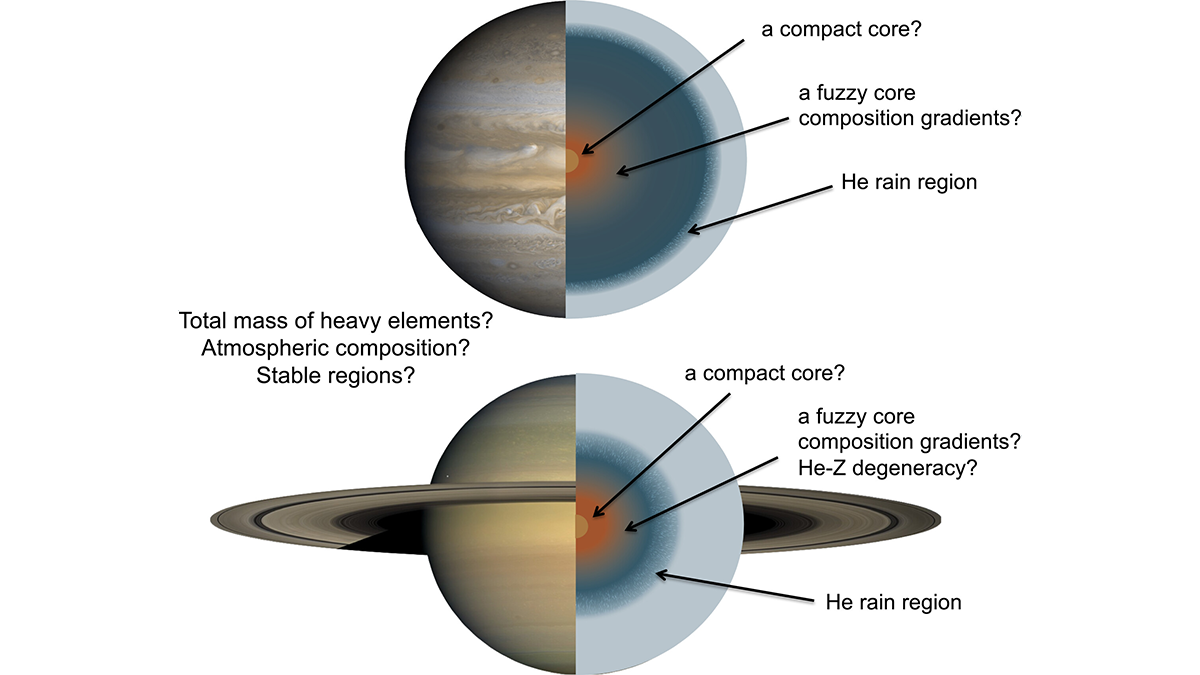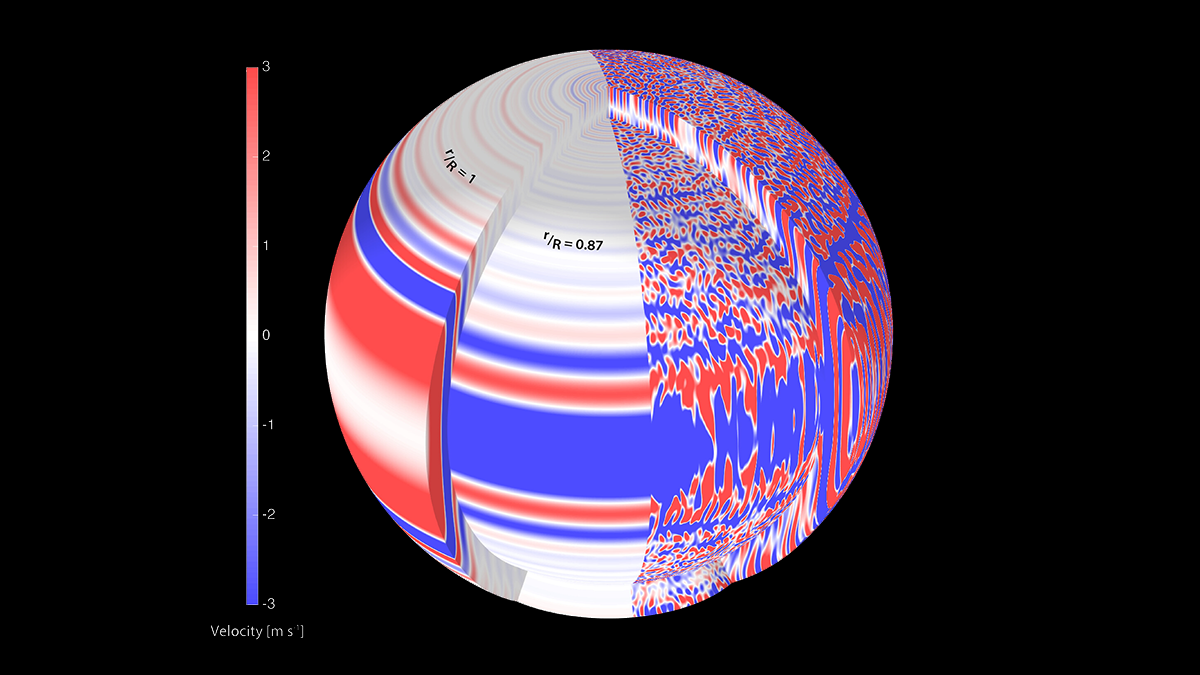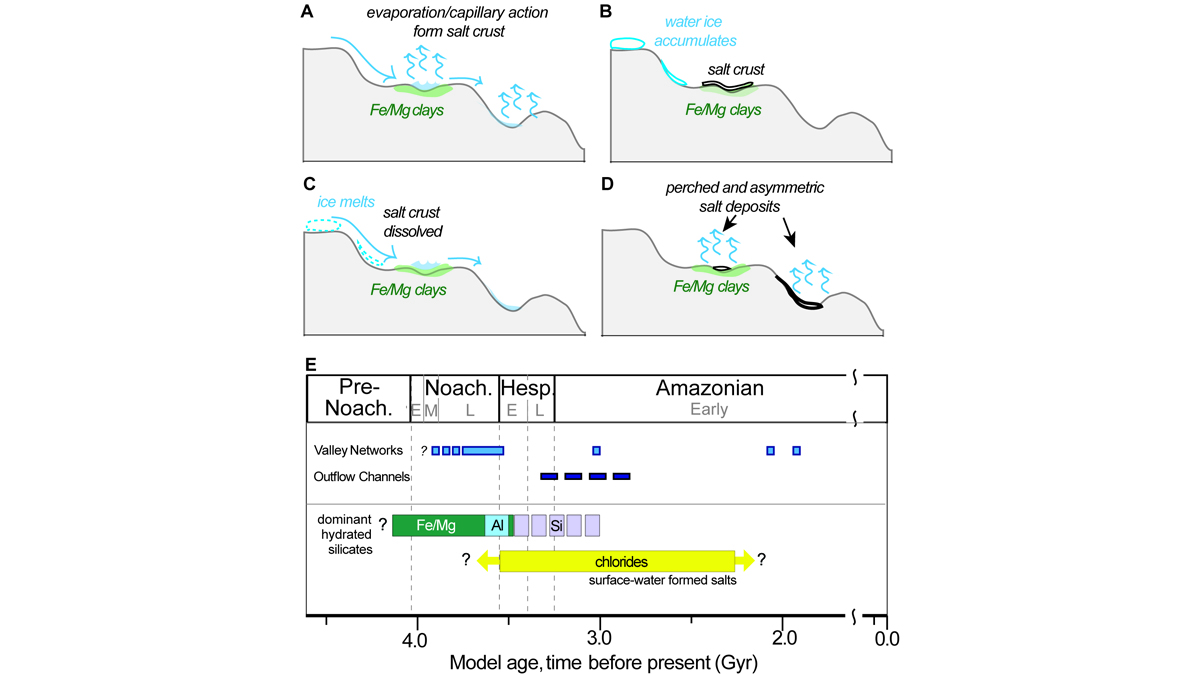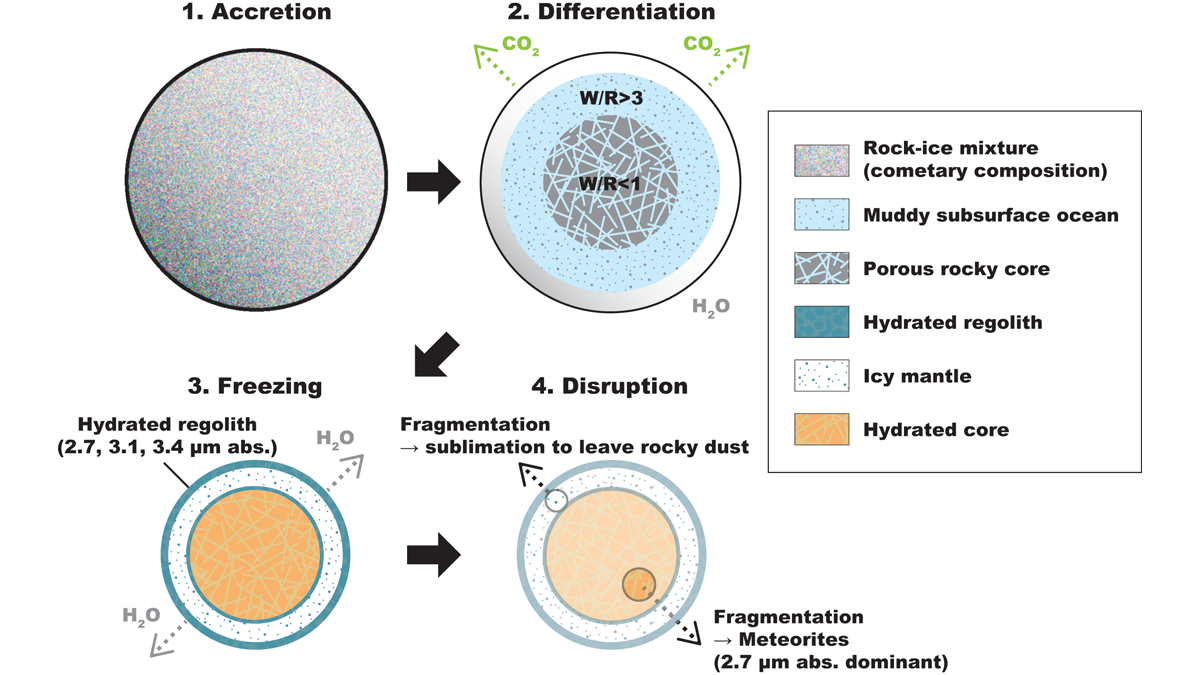The orientation of wind-blown impact deposits on Venus is not consistent with modeled wind directions, suggesting Venus’s rotation axis may have changed.
Francis Nimmo
Gas Giants with Fuzzy Cores
New measurements of Jupiter and Saturn show that both planets have dense cores that are gradational (fuzzy) and large, rather than small and compact.
Preparing to Meet a Metal-Rich Asteroid
The recently launched ‘Psyche’ mission will explore the eponymous asteroid and determine whether it is a fragment of a planetary core or a primordial, metal-rich body.
A Wider and Deeper View of Jupiter’s Jets
The mid-latitude jets on Jupiter are driven by turbulence that arises, in part, from deep cells, consistent with Juno microwave and gravity observations.
Young Ponds on Mars
A detailed study of evaporite (chloride) deposits on Mars shows that small bodies of surface water persisted until about 2.5 Ga, more recently than previously thought.
A Deep-Space Origin for Volatile-Rich Asteroids
Spectral data and modeling suggest that volatile-rich main-belt asteroids initially formed at much greater distances from the Sun (>10 AU).

